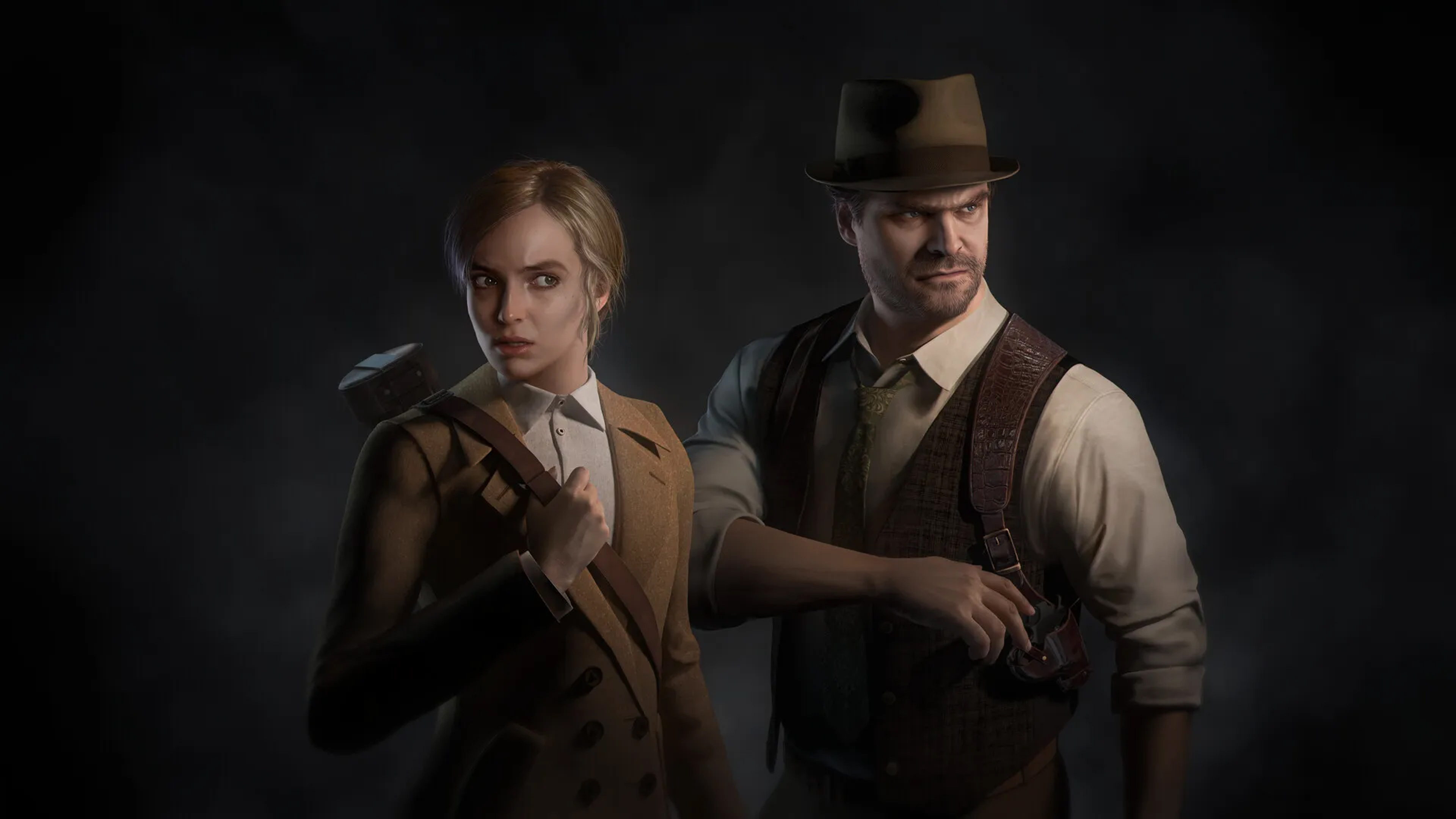
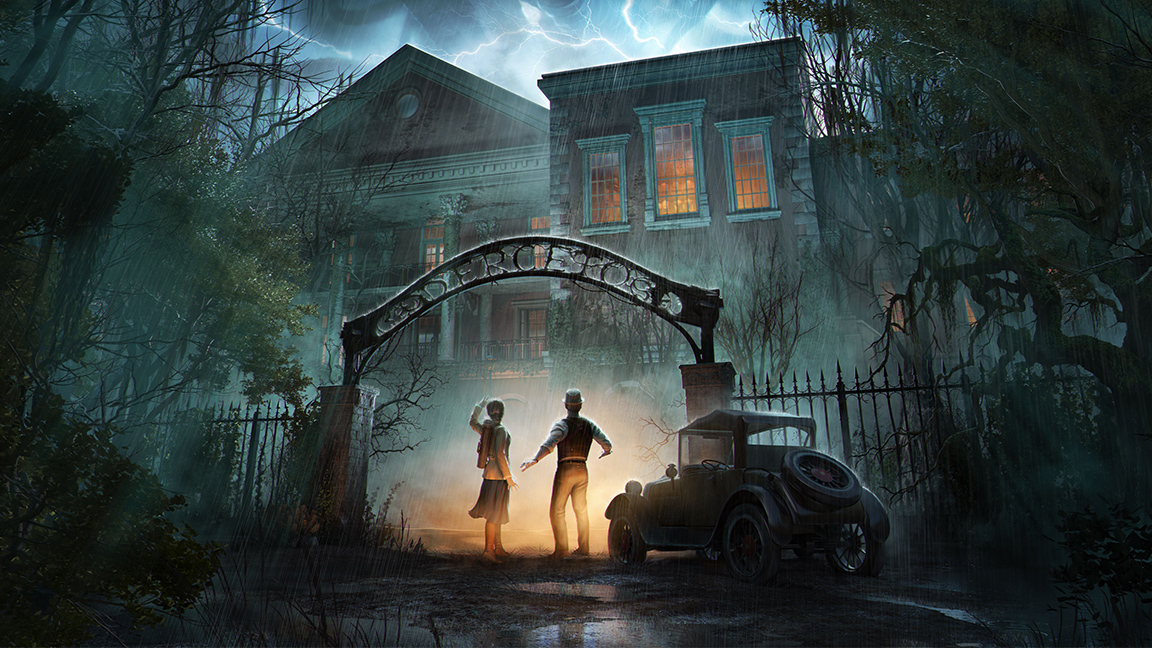
Publisher THQ Nordic
Developer Pieces Interactive
Platform Unreal Engine 4
Formats PS5, Xbox Series X/S, PC
Price £49.99
Release 20 March
Alone in the Dark is an often overlooked game series, one that launched the survival horror genre and inspired Resident Evil; the 1992 original was a direct influence on Resident Evil’s Shinji Mikami. Part of that gaming memory loss can be down to diminishing returns from the franchise as well as some appalling movie adaptations.
Fittingly then, Alone in the Dark’s reimagining revolves around memory, about how the mind can play tricks on us, and developer Pieces Interactive sets out to create an unreliable world where every door can lead to a creaking manor hallway… or a swamp burning in oil and alive with creatures that stalk the tree line.
Alone in the Dark is both a celebration of the 1992 original and a relaunch of the series to a new audience, which means developer Pieces Interactive is walking a tightrope of appealing to new and old gamers at once. Unreal Engine 4 is being used well to cast events in a literal haunting new light to set the mood, while nimble changes are made to the setup to tone down the HP Lovecraft influence while rounding out the hard edges of the original game's lore.
(My review is for PlayStation 5 but Alone in the Dark is releasing on all the best games consoles as well as PC.)
Is Alone in the Dark now a True Detective?
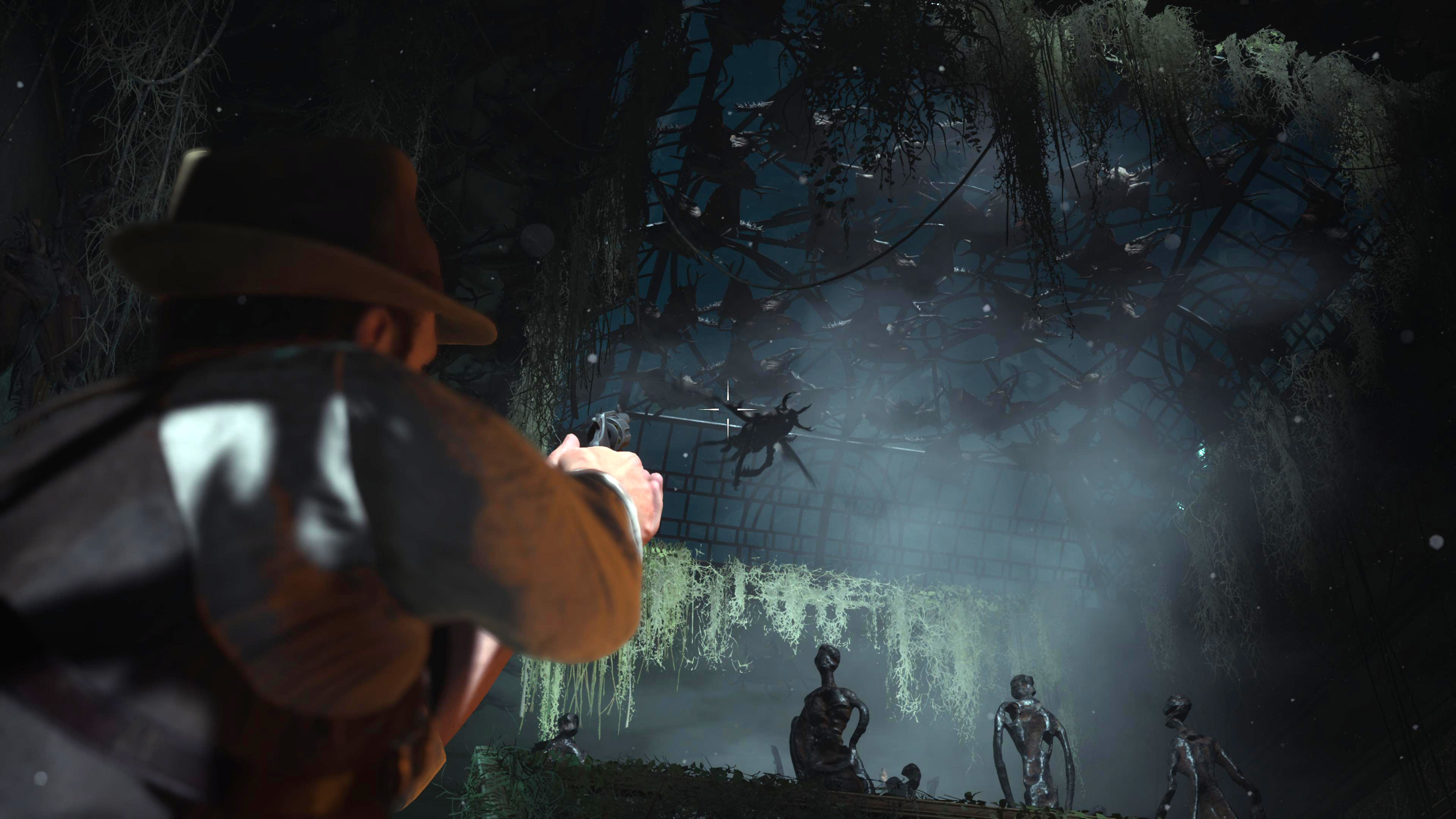
The original’s Jeremy Hartwood remains at the heart of the story, but now his mansion, Derceto, becomes a mental institution on the outskirts of New Orleans and his death is massaged into a teasing disappearance. The 1920s deep south setting remains an evocative backdrop, one haunted by witchcraft, superstition and the very real misery of the Spanish Flu. Alone in the Dark is an American Gothic indulgence that owes more to True Detective and The Shining than more action-focused horror of games like Resident Evil 4.
As with the 1992 game you can choose to play as either Emily Hartwood, who’s venturing to Derceto in search of her uncle, or Edward Carnby, a private detective who’s along for protection. A-list actors Jodie Comer and David Harbour play the roles of the leads, with lifelike digital models enhancing their enthusiastic performances; separately each fills their character with a sense of believable confusion, but when paths cross there’s an enjoyable fourth-wall-breaking wink as one attempts to convince the other something weird is happening.
Whichever character you choose, the main story and puzzles play out in the same way albeit with different cinematics, which feels like a missed opportunity to really update the formula. Puzzles in the game are genuinely tricksy at times even though they’re variations on the locked door / escape room theme - areas of Derceto are locked and need to be slowly opened, in doing so the mysteries of the manor reveal themselves.
A trip down memory lane

As you explore you’ll gather notes and items, you’ll examine paintings, files and diaries for clues, and these need to be referenced to solve Derceto’s riddles and inch closer to discovering Jeremy Hartwood’s fate. This is a little like the detective gameplay of Frogwares' Sherlock Holmes games, and helps ensure you feel like secrets are being uncovered rather than spoon-fed.
Developer Pieces Interactive has included a number of accessibility options to help, whether that is from offering tips, quest guides or adding navigation clues to your map. A traditional option enables you to tweak these guides or turn them off, but they’re a welcome way to focus attention, if only to aid navigation around the manor.
The art direction continually rug-pulls you from a place of comfort to one of unease
Exploring Derceto is at the heart of Alone in the Dark; literally picking at the decaying wallpaper and uncovering the manor’s secrets is a challenge I embraced. The thick atmosphere is a joy to wallow in, and the art direction continually rug-pulls you from a place of comfort to one of unease - a subtle lighting change, a shift in wallpaper design or the one-second pause in Emily and Edward’s hand animation as they tentatively reach for a door handle, suggesting anything could be on the other side.
Not to give too much away, but early on in Alone in the Dark you discover a mysterious medallion left behind by the missing Jeremy Hartwood that can transport Emily and Edward to alternate places, they journey into Jeremy’s memories and mental constructs, places he found safety and meaning within - its Inception directed by David Lynch, and you’ll never truly know where the game is heading next.
The Dark Man (sneaky and mean)
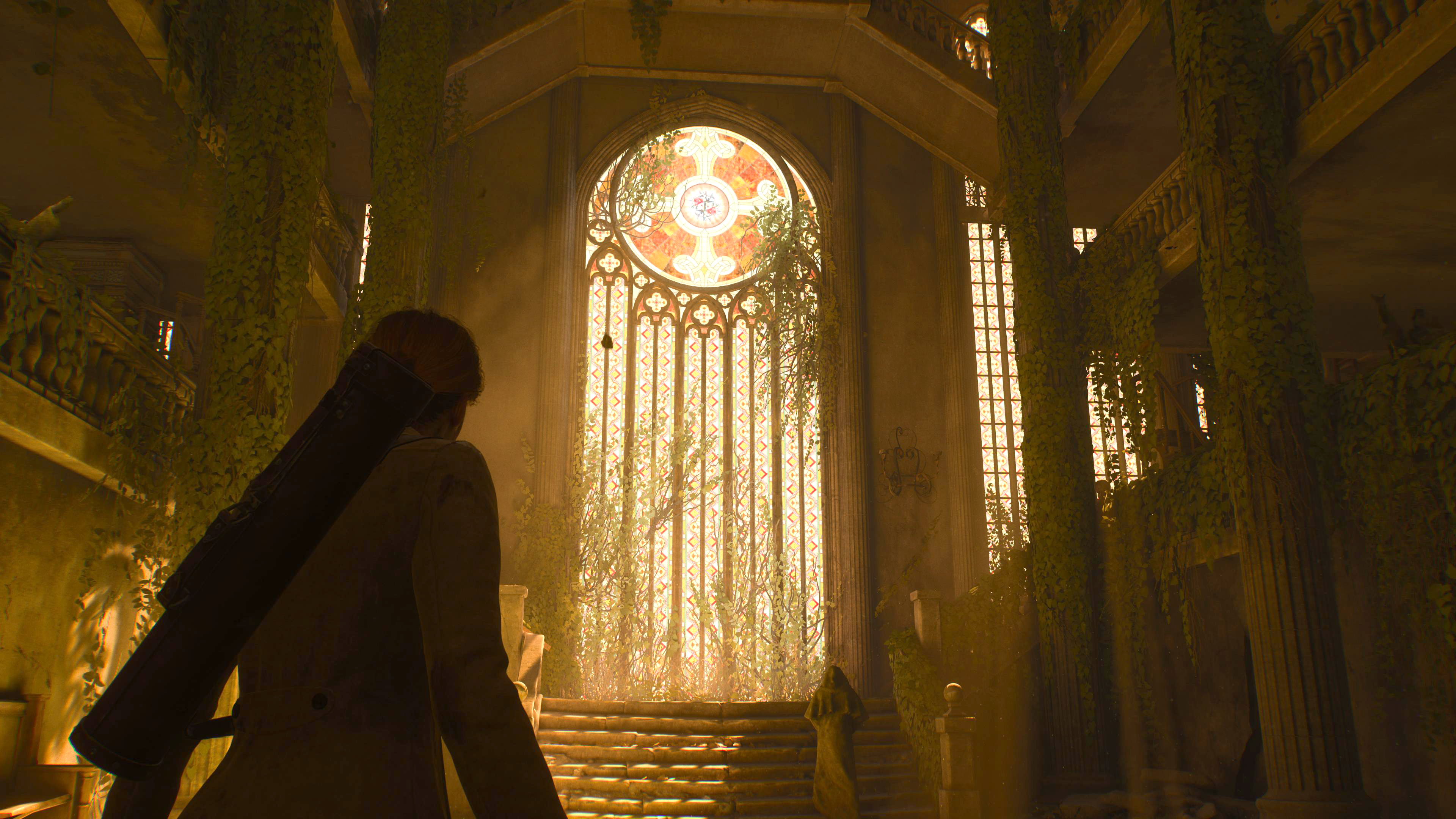
Not everything in these escapist mind palaces is dark and dingy, either. The most anxious I’ve ever felt playing a game is when you first confront Alone in the Dark’s villain, the Dark Man, set in a sun-dappled monastery. The way Pieces Interactive finally intros its Big Bad as a stalking, smoke swept entity supported by a violent audio score recalls Alien Isolation, and perfectly showcases both the dev’s knack for an unnerving set piece and how its pushed Unreal Engine 4’s lighting tech to its limits.
Though, on my third playthrough the AI’s limitations and reset points are alarmingly obvious, so it's the Dark Man's reveal has diminishing returns, but still that first time is always memorable.
It helps that the Dark Man’s presence had been felt but not revealed throughout the game up until this moment, a pervading, ever-present but never revealed threat that’s given life by Jodie Comer’s performance, which particularly helps encourage a deep sense of dread. There's a touch of James Wan to the way the main villain is handled here, always off camera or glimpsed in a shadow.
These sections of the game generally drop puzzles in favour of guns and stealth, and while ammo is scarce there’s mostly enough and in one or two moments the dev loads you up and demands you have fun peppering the game’s mind-monsters with Tommy Gun bullets. Combat is solid but lacks finesse and complexity. You can dodge, melee and throw objects to distract enemies, but there’s a sluggishness to everything, from changing weapons to drinking health-restoring tonics, that feels awkward and rarely as much fun as it should be.
Replaying the horror hits
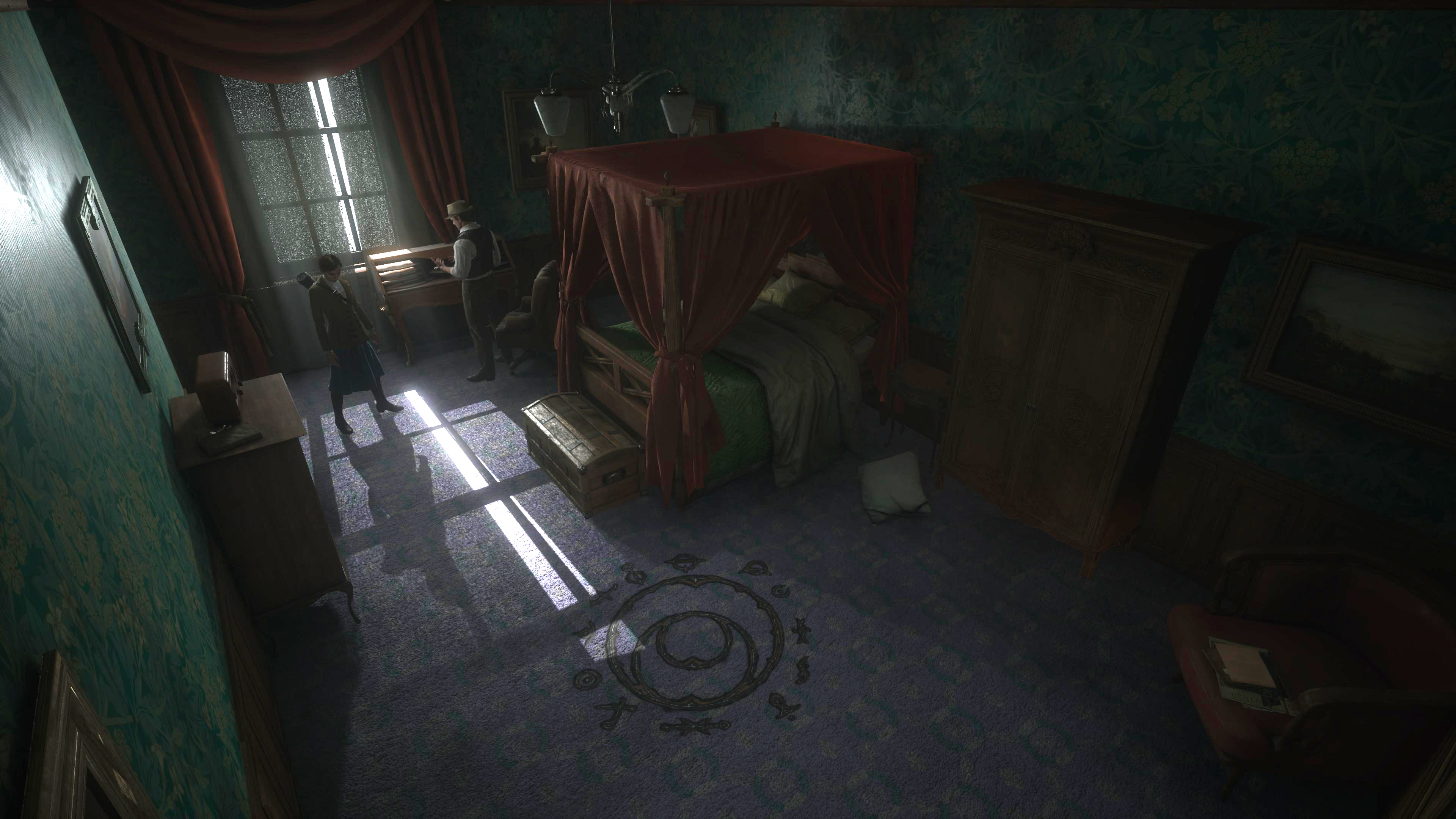
At first puzzles and combat are kept at arm’s length, but as the story evolves the two gameplay styles become more entwined. Combat is lessened in favour of building atmosphere, encouraging exploration and crafting space for Derceto’s cast of unnerving characters to shine.
Moving about Derceto manor becomes a genuinely unnerving experience as Jeremy’s memories seep into the real world and every door or turn can lead to a new nightmare. At one stage I open a door and the game turns into a fixed camera perspective, a homage to the 1992 original, and as Emily mutters "I feel strange", I have to agree.
Alone in the Dark is full of these fun nods to the original game, whether in the adaptation of the manor’s design or the deeper lore - and you can play the game using retro 8-bit character models, which is a fun touch. There’s a secret story path to uncover that alludes to Alone in the Dark 2’s pirates, which raised a smile. A director’s commentary feature reveals how areas of the game were made too, including how they were adapted from the original and even how Wes Anderson was an inspiration on the colour theory of the manor’s design. More games need this feature.
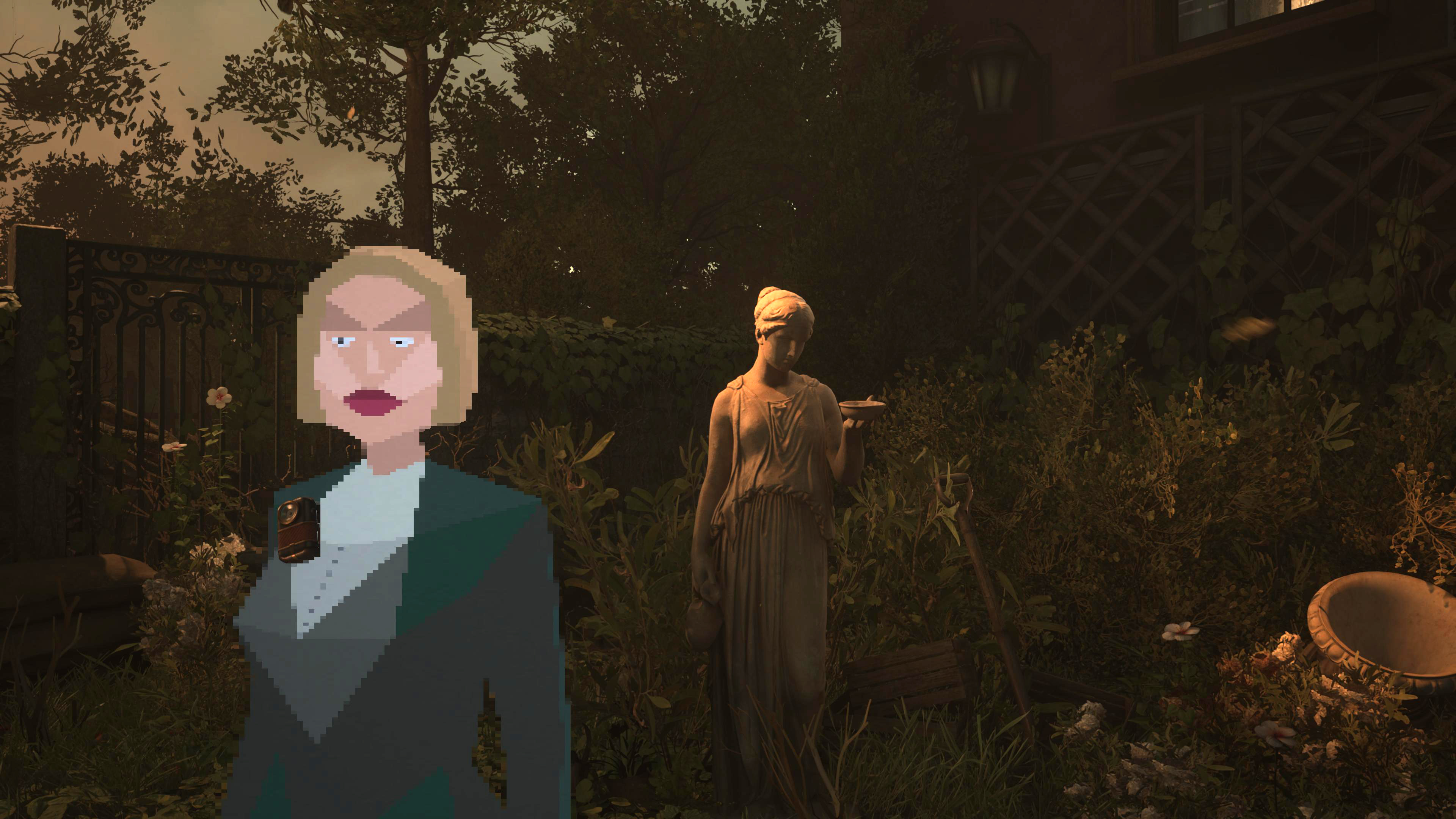
One step-up from the original game is how Emily Hartwood and Edward Carnby are given a little more room to breathe. Each has a mind-mission that goes into their backstories to relive a traumatic event. The downside is this highlights how similar the main story is regardless of which character you choose to play; this isn’t Resident Evil 2 where each character has a unique path to play through, criss-crossing to reveal more story.
Emily and Edward have the same puzzles, the same story and the same outcome, regardless of who you choose to play as - there are secret endings found by collecting all the hidden items, which demands playing both characters, but it's basically gaming déjà vu and not in a fun retro way.
Oh bugs where art thou?
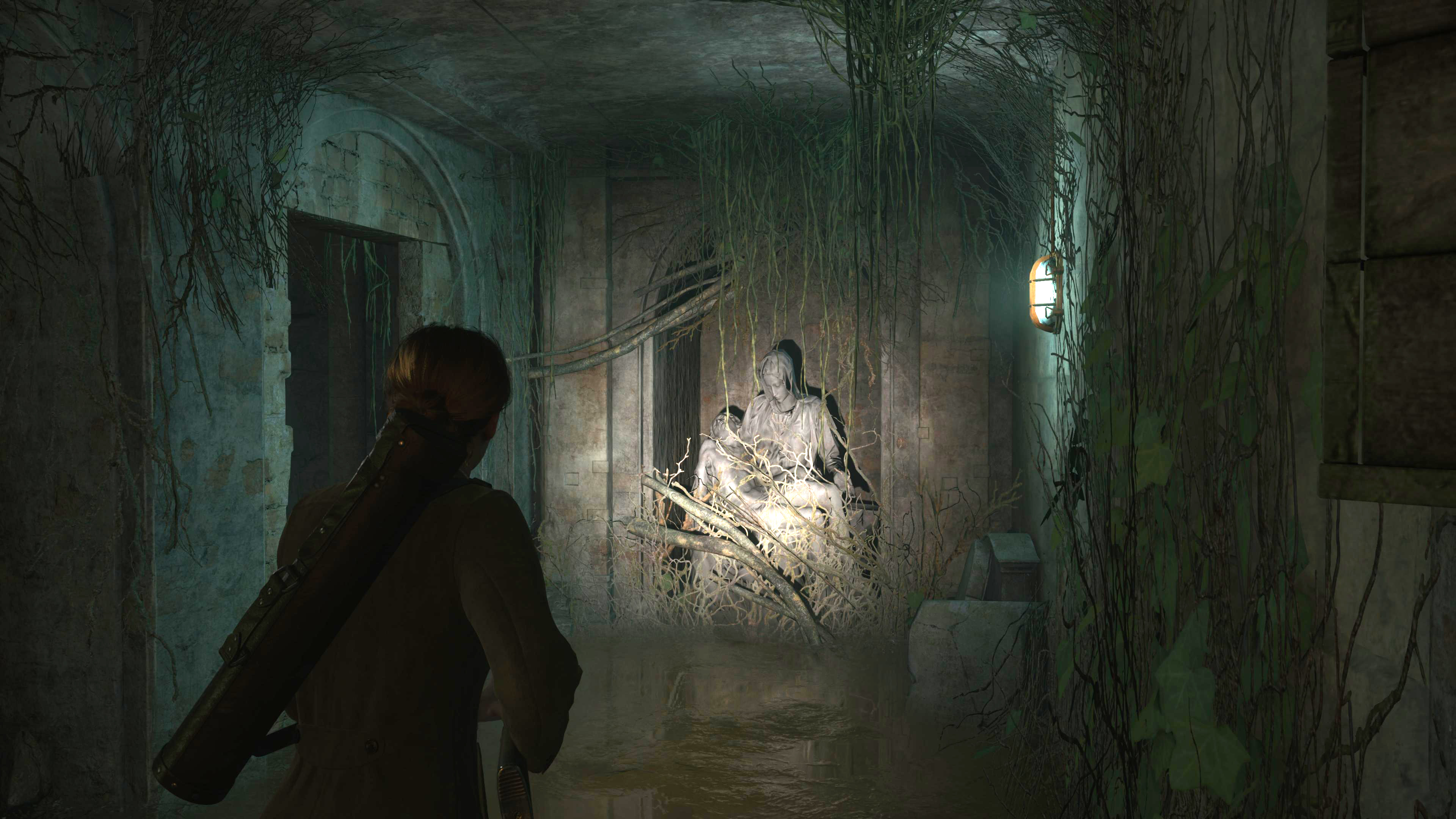
There are bugs, and not the creepy kind. Generally Alone in the Dark is a solid experience, but in Quality mode the game stutters and occasionally tears, and even in Performance mode I encountered missing textures and geometry in one key cinematic that removed a moment of heighten drama (I saw it on my second run). Worse was to come, one bug wiped my autosave and crashed the game.
In one moment my character teleported to-and-fro as the game attempted to align them for a set-piece moment. Animation is generally excellent, particularly in the character performances and small incidental moments to sell the tension of exploring a creep manor house, but there are times where it can feel stiff, particularly when climbing on and off ladders.
Some environment can feel sparse and empty, many stages set are very linear and lack real tension outside of the manor, and while the overall tone and atmosphere is compelling, once you've completed the game a number of times the enjoyment wanes. The only reason to keep returning is to collect every hidden item, called Lagniappes, to unlock secret (darker) endings.
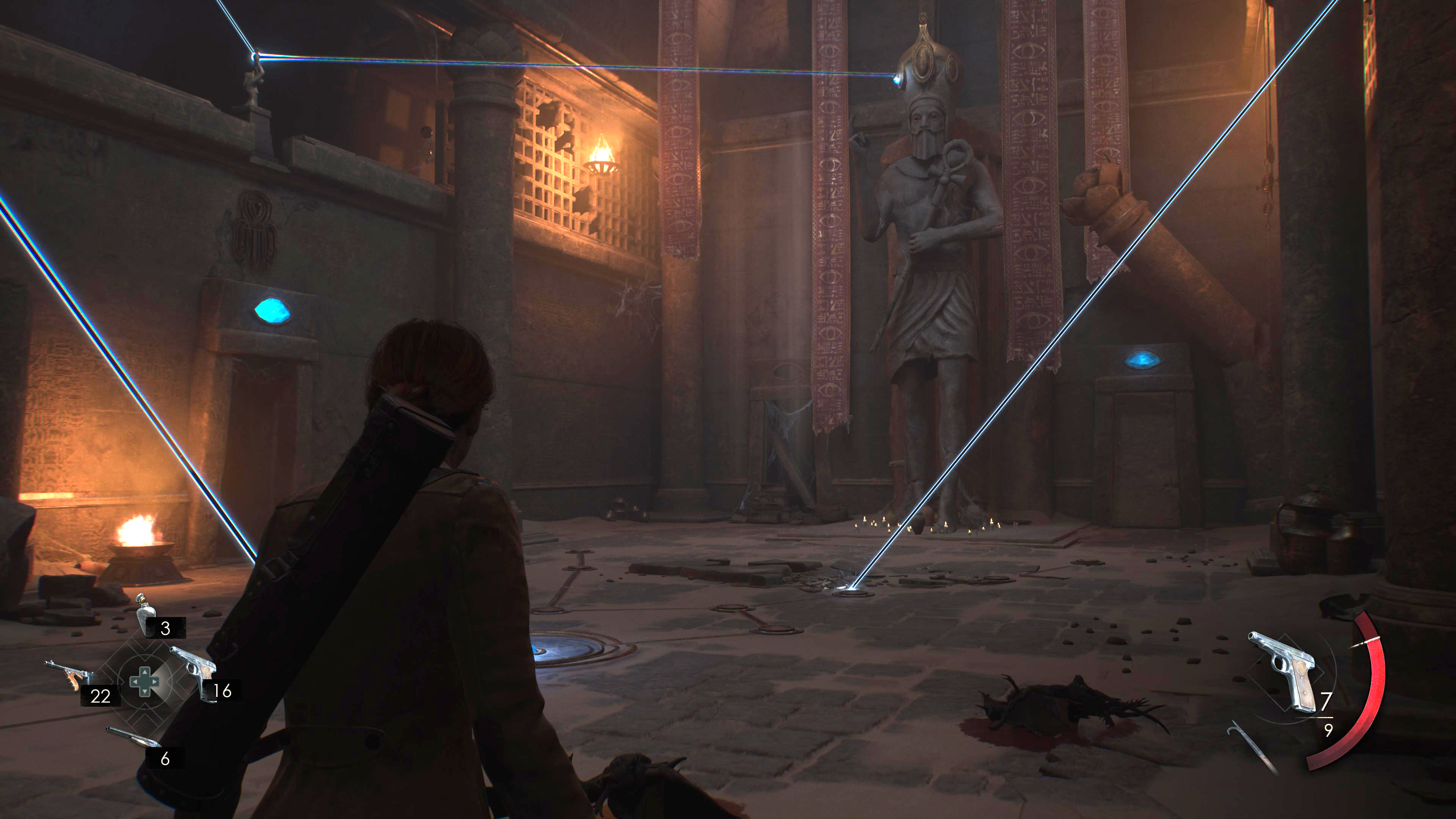
And yet, even these niggles can’t dampen the fun or overshadow the eerie, suffocating atmosphere that prevails in the game on your first couple of plays. With one foot in the past, cherry-picking the 1992 game’s best ideas, and updating it in Unreal Engine 4, Alone in the Dark is an enjoyable if limited reimagining that places the thick, slow-build of atmosphere and puzzling over B-movie gunplay and explosions.
You’re encouraged to read every file and note, dwell on each peculiar character’s every word, and enjoy the unreliability of it all, and despite some issues I continued to keep playing and replaying. Is Alone in the Dark perfect? No. But even as the credits roll and everything looks rosy, I still have a niggling doubt not all is as it seems and something odd is in store for our renewed detective duo, and few games ever feel that compelling.







